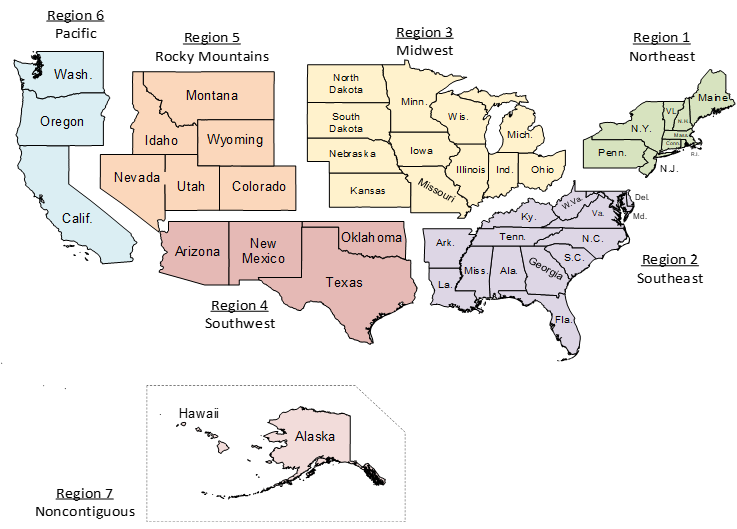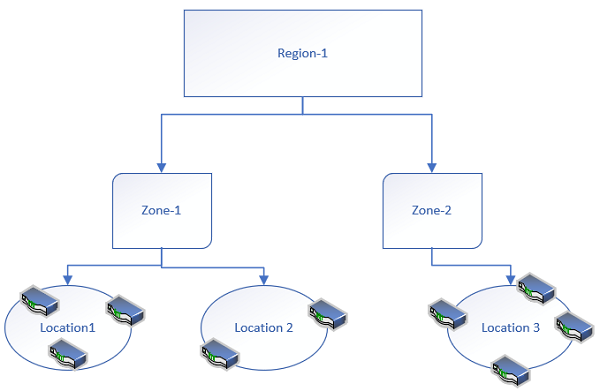Visibility Manager Deployment Model
With Visibility Manager, you can manage packet broker devices across multiple data centers and geographic locations.
You can separate your network into regions and further separate regions into zones. A zone is a set of locations (at least one and no more than five) where packet broker devices reside.

Note
See the Extreme Visibility Manager Release Notes, 6.0.0 for any limitations on supported regions.
Each region is a Kubernetes cluster that is managed by a control plane. Having multiple small clusters rather than one large cluster ensures better fault isolation. If one cluster fails, the other clusters provide failover assistance. All clusters are deployed on virtual machines (VMs).


You identify all zones and regions in a CSV file that is incorporated into Visibility Manager during installation. For more information, see Create a Location Definition File.
For information about deploying the control plan, region, and zone VMs, see Installing Visibility Manager.

